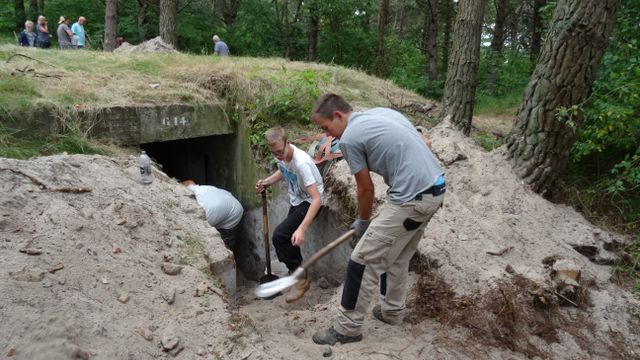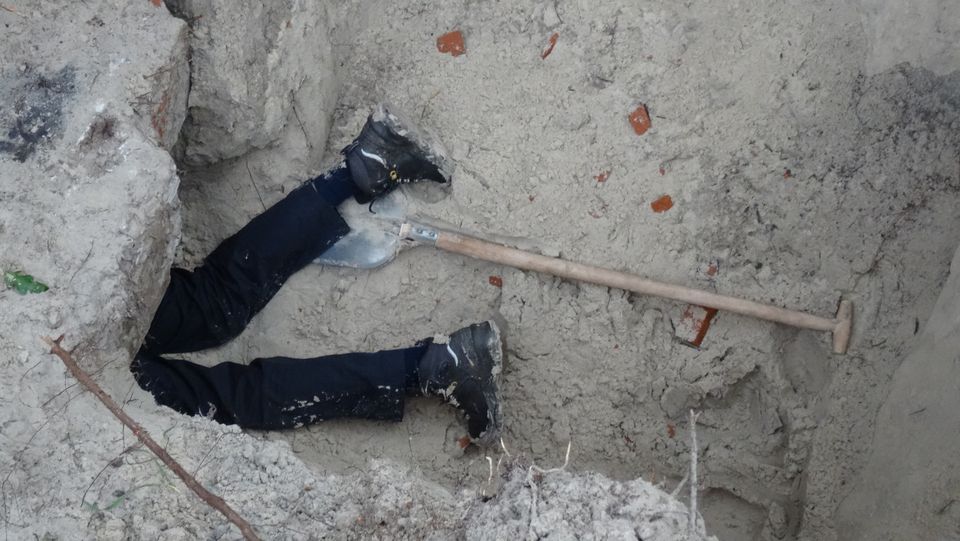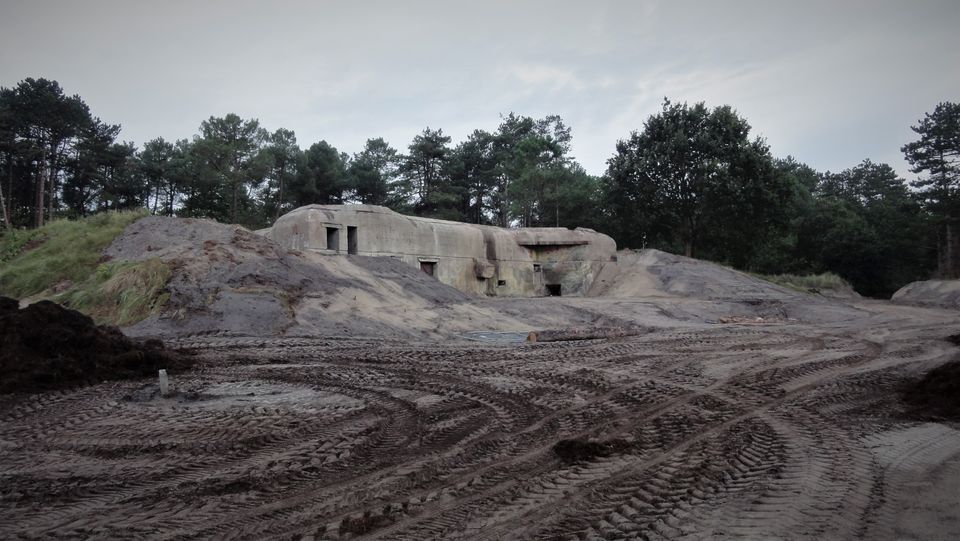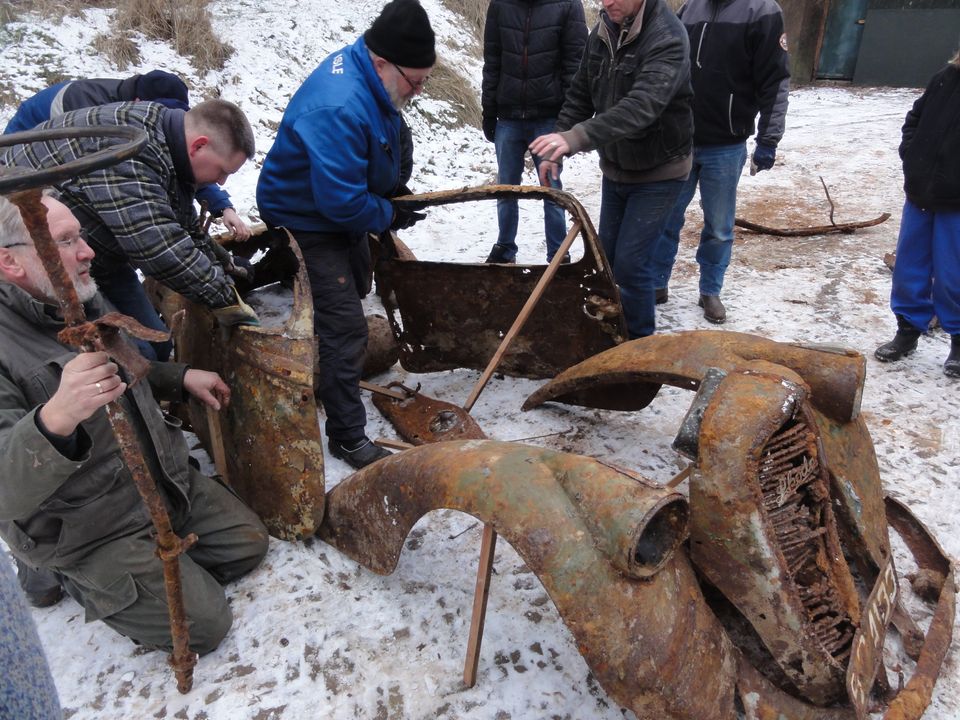Digging into the past
Let's not dig up the past, is what many people thought about the bunkers when the war was finally over. Lately, however, awareness about their historical significance has grown. Instead of keeping them hidden, people are becoming interested in the stories and the visible memories. So bunkers are being excavated and information researched. Jort Spanjer talks about what was involved on Terschelling.
Because there was a shortage of everything, bunkers were torn down so the material could be reused. Other bunkers got new functions. On Terschelling, for example, some are being used as summer houses or for storage, the Folkshegeskoalle has converted bunkers in the forest near Hoorn into a dining room and bedrooms while young people used bunkers as thrilling clubhouses. But due to unpleasant memories and safety reasons, most bunkers were filled in, sometimes even walled up and then covered over. Time also did its part. More and more sand was blown onto them and plants or trees started to grow on top. Or the concrete structures caved in, collapsed or slid from the dunes onto the beaches and finally into the sea.
Part of our history
About ten years ago, people on Terschelling started to change their minds. “Some people thought that it was a shame not to do anything with them. They are, after all, part of our history,” says Jort Spanjer. He was one of those people and is currently the president of Stichting Bunkerbehoud Terschelling. The result is Bunker Museum Terschelling, near the Tigerstelling, the largest bunker complex on Terschelling. Not by the sea, but in the forest just outside of the village West-Terschelling.
This took a lot of effort. First, consultations and legalities for drawing up concrete plans and collecting money, people and permission. “Also, the Forestry Commission, who owned the land, wanted to know if we were serious and we wouldn't make a big mess.” The Tigerstelling has a surface area of 7 hectares. The foundation received a leasehold on approximately 3.5 hectares of this. “We're fortunate it falls just outside of the Natura 2000 area.”
Mayonnaise buckets
Trees were then removed from buildings and soil moved so that the first bunkers could be uncovered. Starting out with a power shovel and digger, removing sand and rubble from bunkers ultimately had to be done manually. “With 10-litre mayonnaise buckets,” says Jort Spanjer. He thought it was great, how enthusiastic ‘treasure hunters’ helped out. Especially the young people who had previously managed to dig their way into the bunkers; they were now the most enthusiastic volunteers.

No real treasures were ever discovered, unless you count the rusty Skoda that was found in parts. It seems it had been confiscated on shore and brought to Terschelling. “A wall drawing and wall decoration were also found. The drawing was framed but everything else was already stripped. There was however a whole lot of chicken wire, the camouflage net of the Germans.”
It took a few months to dig out each bunker. Then came the cleaning, repair works, painting, installing new electrics as well as heating and airco for the furnished bunkers. “Otherwise everything gets covered in mould quickly.” And safety measures were implemented where needed.
Research
It took a lot of research to find out how the bunkers were furnished and what went on in them. No one was allowed in; there were landmines and barbed wire. “My father had to transport materials there every day with his horse and wagon during the occupation, but he was never able to see anything. It was all top secret. The only islander who was ever inside was an electrician who had to do some work.” Maps, photos and archives all led to the discovery of various information. Lately, the attention has been more focussed on the stories about the inhabitants of the island themselves.
“ We found the original German company, but they didn't want to touch it ”
A great deal of time was also spent on searching for authentic furnishings. Furniture and Bakelite switches, but also, for example, the four large glass plates from command bunker Bertha. In the ‘Seeburgtisch’, the movements of planes were projected onto a map from underneath with red and green lights. Only shards remained. “It was a lot of work to have them remade. We found the original German company, but they didn't want to touch it.”
All those efforts led to a museum with many visitors and appreciation. Ticket sales, donations and subsidies from the province, municipality and Waddenfonds make it all financially possible. “Our cultural-historical association ‘Schylge myn Lântse’ has also provided lots of support.” And the passionate volunteers, islanders and mainlanders, are also absolutely crucial. There are about 75, for organising, digging, giving tours, maintenance, etc. “We also have a list of wishes and jobs to be done. We discuss which jobs we're going to work on.” Digging into the past and expanding the museum are always on the agenda.
-
Nature and the Atlantic Wall
Nature and the Atlantic Wall

-
No forgotten history
No forgotten history

-
Wonderful encounters
Wonderful encounters




